The Troubles may have ended more than a quarter of a century ago, but thousands of people still bear the emotional and physical scars.
Taxi driver Alex Bunting was critically injured when an undercar booby trap bomb exploded under his vehicle in 1991.
Taxi driver Alex Bunting lost a leg when an IRA bomb exploded under his taxi in 1991. The blast blew a box of loose change he kept under his seat up through his legs and torso. The coins now form part of an exhibition of ordinary items, made extraordinary by the conflict #GFA25 pic.twitter.com/0zXrFsZfo7
— RTÉ News (@rtenews) April 7, 2023
The blast blew a box of loose change he kept under his seat up through his legs and torso.
He was peppered with twisted coins, which the surgeons had to remove carefully.
They could not save his leg, but they managed to save his life.
"I saw this massive flash come out of the dashboard. All I can remember is my left leg getting blown out of the door.
"Being a taxi driver, I had a box of money under my seat and when the bomb went off it blew it into my body. So, I was covered in pound coins, 10s and 20s."
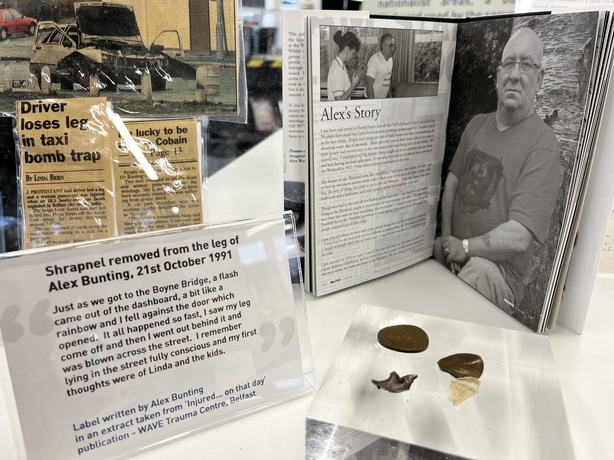
The coins now form part of an exhibition of ordinary items, made extraordinary by the conflict.
A tennis ball with a hinged flap, used by loyalist prisoners to pass messages between the prison compounds in Long Kesh.
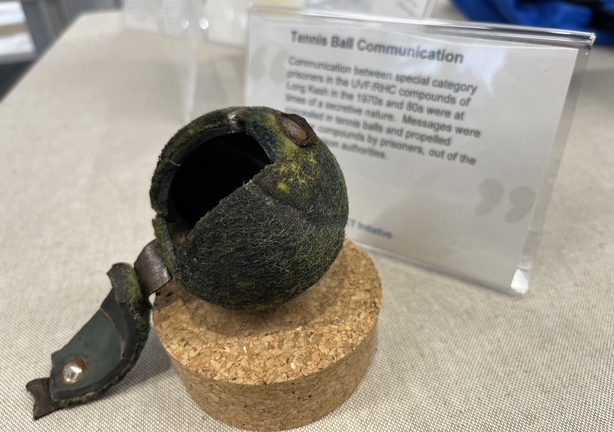
A blank cheque used by a journalist to jot down a crucial IRA statement.
A harmonica that belonged to one of the Disappeared – those secretly murdered and buried by the IRA.
It was the only item his mother had to remember him by, until his body was recovered and returned to her 21 years later.
All sides to the conflict have a different take on the Troubles, it makes dealing with legacy fiendishly difficult.
Kate Turner curates the exhibition for an organisation called Healing Through Remembering.
"We use Alex's story and the others to talk about the everyday experience of what happened. How did we actually live – in a way that we can maybe understand each other a bit better.
"Maybe someday we can come to an agreed narrative, but what this exhibition shows is that you don’t need an agreed narrative to do something. That actually just listening to each other takes us into new spaces of understanding new ways of engaging with one another."
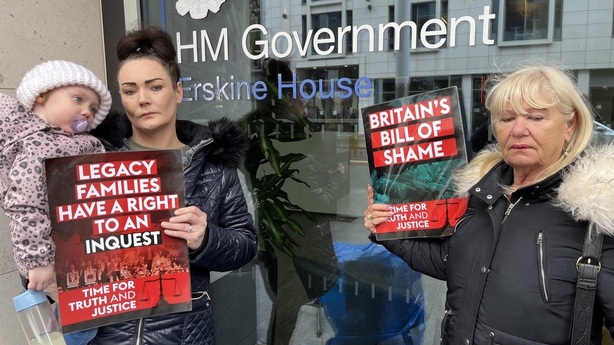
Legacy is personal but it is also political. British government plans to shut down all Troubles-related inquests and criminal and civil actions had united all sides in opposition.
When it comes to the past, it is one of the few things people agree on.
Legacy is not the only issue left unresolved by the Good Friday Agreement – far from it.
25 years on, there are mixed views as the commemoration of the landmark agreement gets under way.
Unionists and loyalists were harder to persuade and did not vote for the Good Friday Agreement in the same numbers as nationalists. There were some difficult choices around police reform and prisoner releases.
And a quarter of a century later some do not feel they got as much from the peace process as their nationalist counterparts.
Rosemary Bell-McCracken is a young loyalist community worker in Rathcoole, Northern Ireland’s biggest housing estate.
The people she works with are unionist, loyalist, Protestant and working class. Many of them did not expect the sort of change the agreement ushered in.
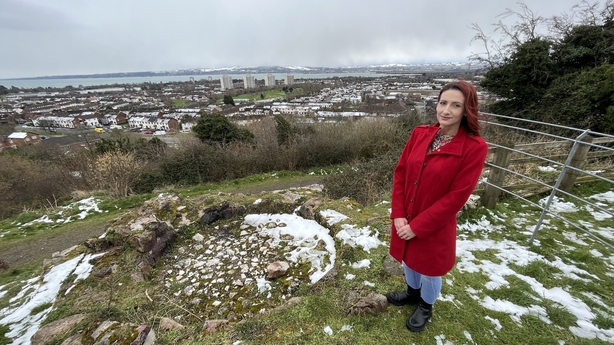
"They genuinely thought it was going to go back to pre-Troubles times where everybody lived in mixed communities, where everybody worked together.
"That didn't happen, it was still divided. There was still that narrative of them and us.
"Something I hear quite a lot is that republicans and nationalists used the Good Friday Agreement as a basis to fight for a united Ireland, while we never thought that was going to be the case."
Add in issues of poverty, poor housing, underfunding of local schools and health facilities, a sense that their culture is under attack and nationalism is in the ascendancy, and she said it is not surprising the people she talks to are less enthusiastic as they watch world leaders fly in to herald the work of the last 25 years.
But for all the frustration there is a fundamental truth - ending the violence stopped people dying.
Political commentator Stephen Grimason estimated that around 2,000 people are alive today who would have been murdered had the Troubles kept going.
He saw the tortuous work of peacebuilding up close. A veteran political correspondent at the time of the Good Friday Agreement, he scooped the international media by being first to get his hands on a copy of the text.
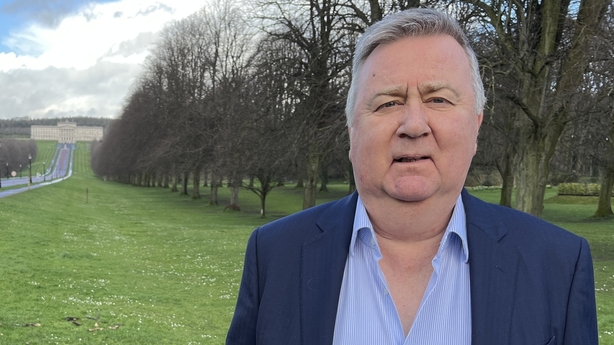
"I was very aware that I might not just be holding a document in my hand, I might be holding the future of Northern Ireland."
Then he acquired a unique perspective, on the inside for 15 years, as chief media adviser to the Stormont Executive.
The executive he served was dogged by problems, sometimes stable, often suspended.
It has been in a state of collapse for a total of nine years since it was first introduced in 1999.
There is an inherent tension at the heart of Northern Ireland, the opposing gravitational pulls of Irish unity and the union with Britain.
Brexit has supercharged that tension, creating the current political crisis and the latest collapse of the institutions.
Mr Grimason believes Dublin and London need to pay close and careful attention to the politics of this place, despite the passage of time.
"I think people thought that story was over, you didn't need to pay that much attention to it.
"But I think that they do. That's going to be one of the primary building blocks of getting us out of here.
"But again this will not be resolved any way fast. Peace, as always here, comes dropping slow."
The main achievements of the last 25 years have been the absence of violence and the often ungainly attempts at self-government.
But things like legacy, the instability of the institutions and persuading all sides of the merits of the agreement show that peace building is a very long-term project.
Read more headlines on the Good Friday Agreement
Stormont to host special GFA anniversary ceremony
Watch: What is the Good Friday Agreement?







